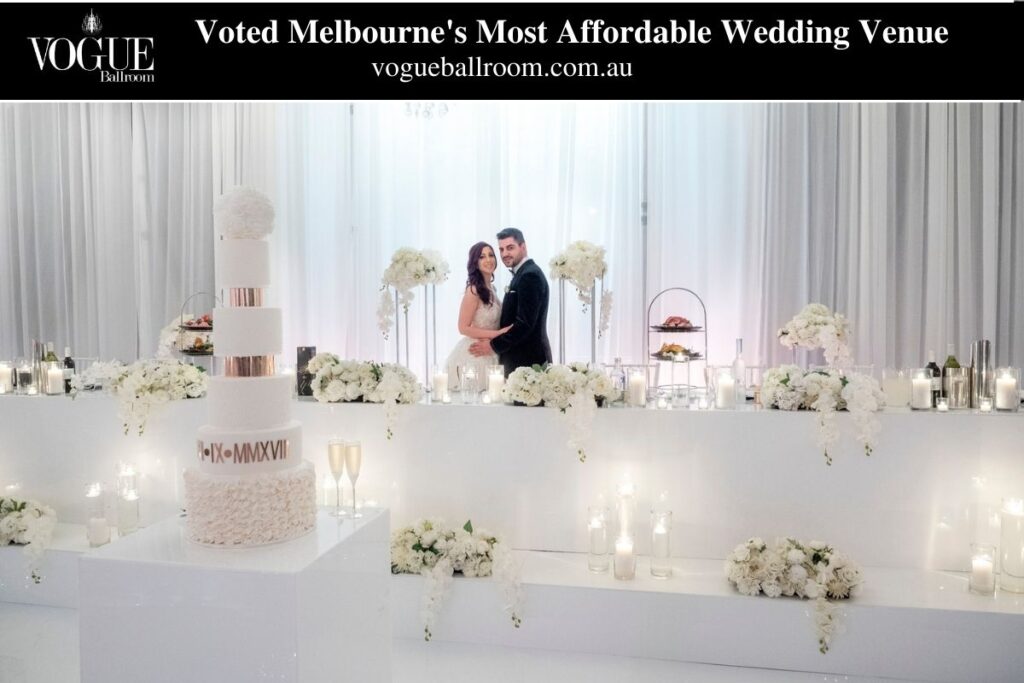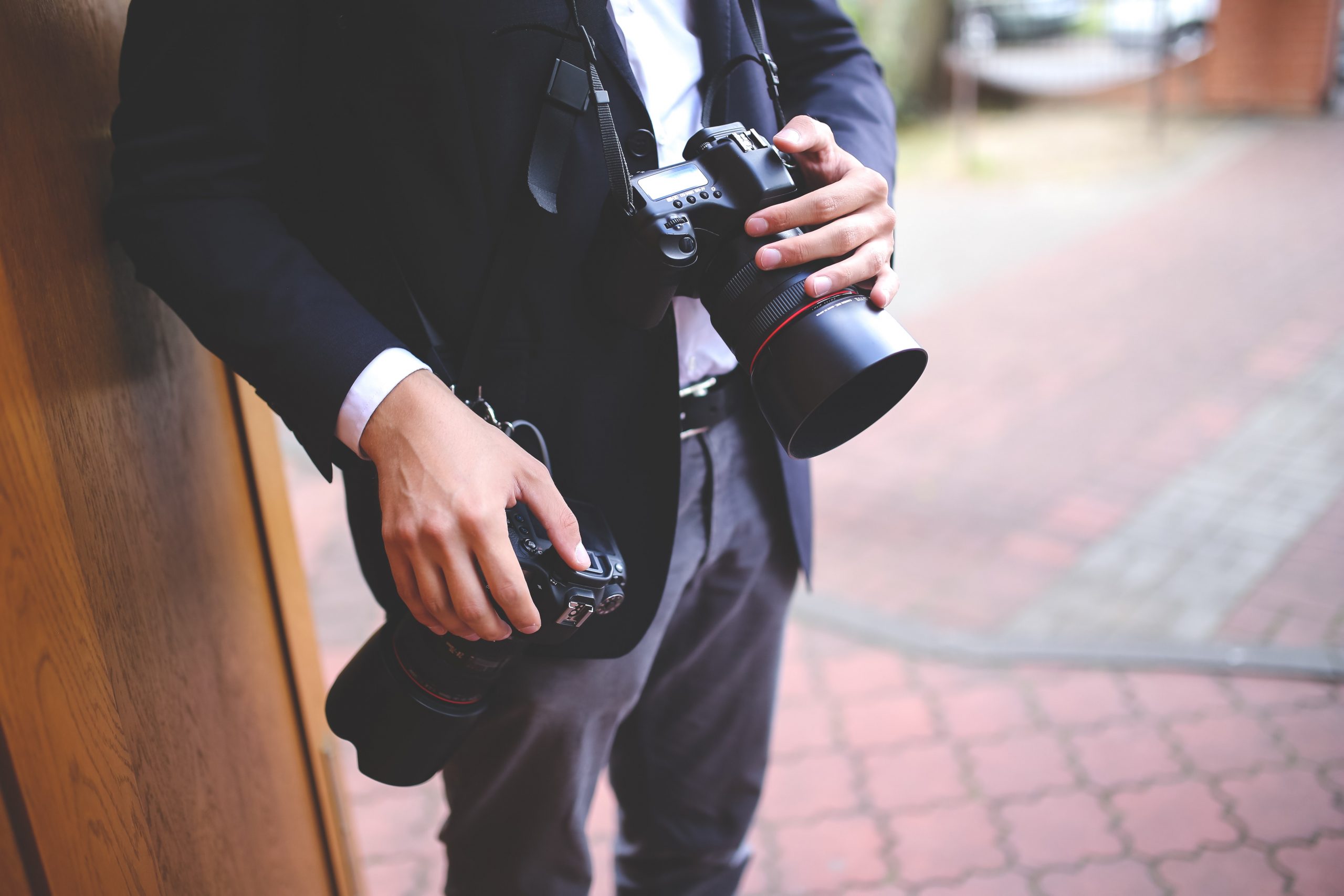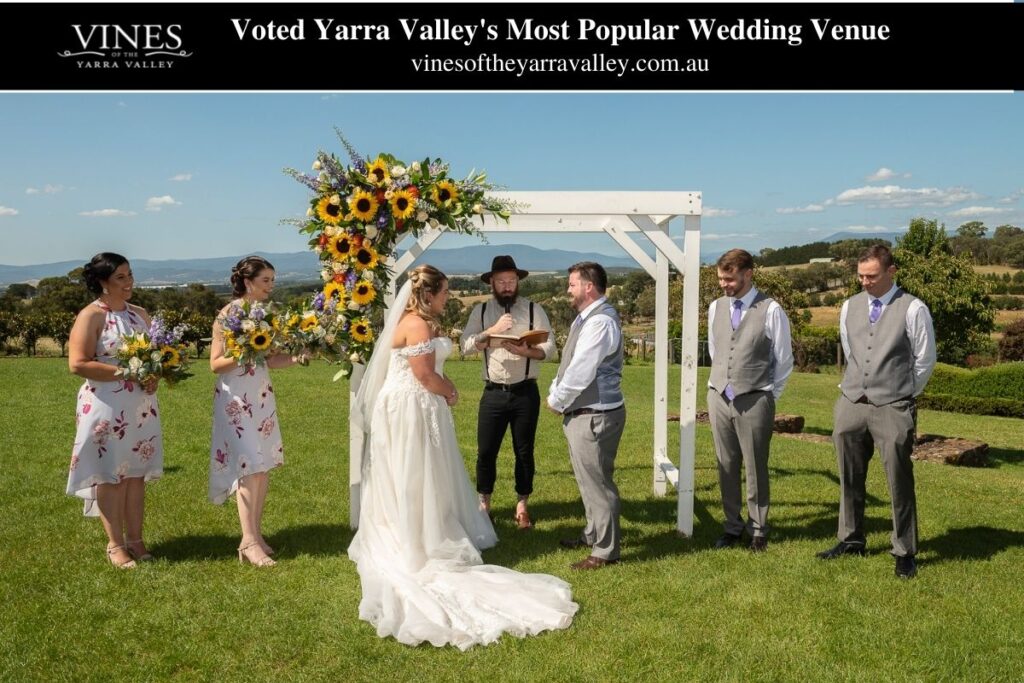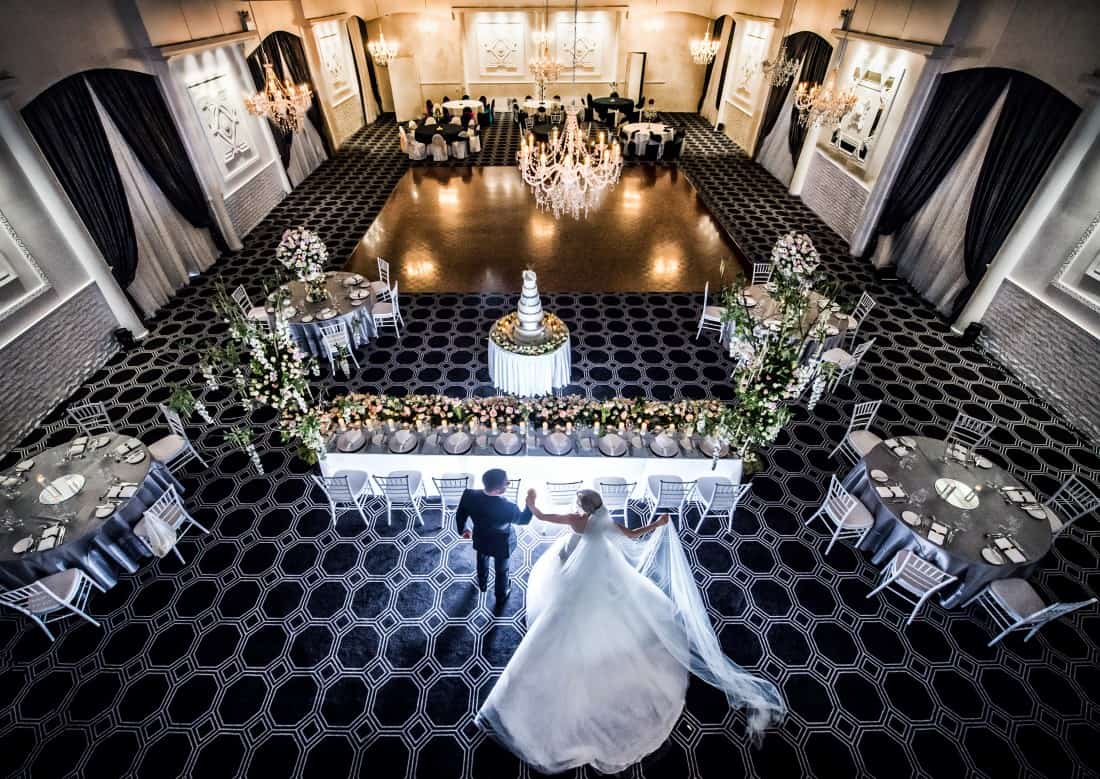Is this the proper place for you to stand to take photos at the wedding? The wedding location is not always a generic area, so you’ll need to have some specifics about where you ought to be standing nailed down. This photography tutorial will explain the best spots for the photographer to take pictures during the service.
Throughout the course of a wedding day, there will be numerous memorable moments that you will want to preserve for the happy couple. There are bound to be some great photo ops during the ceremony, and it will undoubtedly be an unforgettable experience for the happy couple and their guests. You may help tell the tale of their special day by capturing the true feelings of those present.
It’s strange how, when photographing weddings, we often forget about capturing a crucial moment. Even in albums, this ceremony is often given less attention than the couple’s portraits.
This is helpful since it relieves pressure on the photographer and frees up time for more creative freedom than would normally be possible during the wedding.
Although there are essential photographs to be taken during any ceremony, the actual event itself might be rather dull to capture. It’s a long scene of two people standing still.
Why Photographer’s Angles Are Important?
While wedding days can play forever, the ceremony itself usually only lasts 20-30 minutes, leaving little time to effectively capture all the significant events and people present. Inevitably, the length of a wedding ceremony will vary based on the traditions and customs of the couple’s homeland.
Now imagine that you are a member of a group of three photographers covering a wedding. To properly record the greatest angles for stronger storytelling, you’ll need to know how to communicate with your team members.
Here are eight pointers to keep in mind while you and your crew photograph a wedding ceremony, covering all the bases from the processional through the recessional and beyond.
Mastering the Ceremony
Participate in Rehearsals
Traditionally, a wedding’s groom and bride will run through their rituals with a wedding planner and/or officiant before the big day. A photographer needs to be present during rehearsals in order to learn the rituals. Check out our extensive list of Wedding Photographers in Melbourne to help capture your special moments.
The groom and bride will be among those milling about. Communication between you and the client will improve as a result. If the wedding and reception sites are the same, you can use the rehearsal to plan where to stand for the greatest pictures.
Ask about where to and where not to go.
Oftentimes, the couple will want to include postures that they’ve seen at other weddings into their own. You should stand in these predetermined locations for the best results.
However, you must ensure that your presence during the ceremony will not be disruptive in any way. Help the pair figure out these positions by coming to the rehearsals. You’ll feel prepared and ready to fire just on big day.
Visit the Location
There will be a wedding ceremony, and you should try to attend the actual ceremony before the big day rather than just the rehearsal. You can better pinpoint your targets with this visit.
Get up and about to take inventory of where you’ll need to either stand or instal a tripod. Taking practise shots in an empty hall might help you plan the best possible shots during the wedding reception.
How about you? Have you ever shot with a tilt-shift lens? Have a look at this incredible tool for taking pictures at your upcoming wedding.
Obtain the Officiant’s Approval
The traditions that a couple chooses to include in their wedding ceremony can make their big day truly unique. In most cases, you’ll need to work closely with the priest, priest, or other officiant if the ceremony will take place in a church or garden.
Pastoral Approval
The officiant should be aware of the importance of wedding photography, but you should still consult with and acquire their blessing before using the flash during any special parts of the ceremony. In a same vein, your locations shouldn’t interfere with the officiant’s ability to carry out the ceremony.
The officiant will have a better grasp of the situation after talking with you, which will help him avoid making any unnecessary gaffes.
Communicate with the Visitors
It’s suggested that you mingle with the guests at the wedding. You have to give favours to receive them. You can create a pleasant setting for the session by chatting with the guests.
All of the guests will readily follow your cues, allowing you to freely switch locations to get the images you need. You never know who you might meet who could aid you in your job search.
Before the ceremony, consult with the officiant for timeline cues.
We advise consulting with the officiant first before ceremony begins so that everyone knows what is expected of them after the processional has begun. You should probably ask the officiant how well the ceremony will progress, since general wedding timelines usually provide such information.
An officiant will say a few words before declaring the first kiss, so be sure to ask him or her for a specific phrase. Your squad should be able to get into position soon time to catch the action if they have this clue in advance. After the kiss has been announced, we also suggest politely asking the officiant to leave the frame so that the focus can be entirely on the bride and husband (see before and after images above).
To avoid cross-shooting, communicate with the cinema team.
It is important to coordinate with the cinematography crew so that you don’t end up in each other’s photos, as we discussed in our earlier post on photographing the first look between the bride and groom. When the groom and bride are on the move, such as during the entry and recessional, communication is very important.
Follow Through From Start To Finish During The Processional
It is recommended that photographers follow each subject (parent, groom, bridal party, and so on.) as they go down the aisle and into their ceremony positions. If you start taking pictures as soon as the groom walks down the aisle and switch to the following member of a bridal party before he has taken his position at the altar, you risk missing a significant moment, like the groom giving his mother a hug just at end of the hall (see the image below). Delivery of the final photographs with these natural, unposed moments will be much appreciated by your clients and will go long way towards exceeding their expectations.
Divide And Conquer The Aisle Shot For The Bride’s Entrance
The second photographer (S) should position himself at the end of the aisle as the bride walks down it so that he may shoot over her shoulder and catch the groom’s (G) expression. On the other hand, the main cameraman (L) sticks close to the groom so he can record the bride’s entrance and the groom’s reaction in real time.
The bride is the centre of attention on her wedding day, thus her arrival into the ceremony venue is a major highlight. Until this point in the ceremony, the bride and groom would not see one another for the first time. Even though more and more engaged couples are opting to get a first glimpse before the ceremony, the emotional responses of the bride and groom and their guests remain astoundingly powerful.
An effective shot of this scene requires coordinated efforts from both the photographer and the lens. For example, if the main camera is using a wide-angle lens to shoot the bride walking down the aisle, the secondary camera should switch to a longer focal length lens, such as a 70-200mm, to get the groom’s response (see the images below). In Photographing the Ceremony, we go into greater depth on the positioning and motion of the photographers.
Above: primary and secondary camera views of the bride’s father “passing away” his daughter during in the wedding ceremony’s processional. Photographers 1 and 2 in the bottom row capture the bride and her father sharing a heartfelt embrace during the processional.
The primary and secondary photographers should continue taking pictures of the pair after the bride’s father gives his blessing & leaves her daughter with groom at the altar.
Looking for the best Wedding Photographer in Melbourne? Check out our ultimate list here.
Camera Angles To Tell A More Compelling Story
There are countless ways to capture a wedding, and this picture does it all. It’s clear that having your crew set up in the best possible spot to record these moments when they happen is crucial.
Depending on the number of expected guests, a wedding photography team could consist of anywhere from a single photographer to three photographers. The more photographers you have, the more coordinated your movements will need to be to capture all of the critical moments without interrupting the bride and groom or their guests.
All shooters should take turns stationed in the centre aisle, on the left side of the audience, and on the right hand side of the audience during the ceremony (see the image above). Photographing the event from a wide or artistic vantage point, the primary photographer will typically begin at the end of the centre aisle. The wedding photographer should cover that centre aisle when the lead moves away to get better shots. The third shooter should keep track of where the other two are and adjust their positioning accordingly. The ideal would be for these actions to flow together like a dance, but honing that level of synchronisation could take some time.
Be Aware Of Cultural Differences
Symbolic customs and rituals are deeply ingrained in every society, and they vary widely depending on the culture. Before photographing a wedding, it’s important to familiarise oneself with the customs and peculiarities of the bride and groom’s culture. Once you learn the meaning behind the rituals and things being used, you’ll be able to anticipate when important moments will come and be prepared to capture them in the best possible light.
The Culture Wedding Photography Guides provide in-depth advice on documenting nuptials from a wide range of traditions.
Shooters for The First Kiss And Recessional
You should know when the officiant is going to proclaim the first kiss of the bride and groom if you discussed this with him or her before the ceremony. Lead and second photographers typically stand side by side (sometimes called “stacking”) in the main hallway and catch the first kiss with various focal length, one using a 24-70lens adapter and the other with a 70-200mm lens.
When the couple has finished kissing, the lead photographers should go to the beginning of the aisle to follow them as they make their way back. If you’re following the couple, take careful not to walk into anyone or anything while going backwards. If a second shooter is available, have them stand back as the groom and bride leave, or make sure everyone knows you intend to do so.
You anticipated the recessional would be a perfect time to try out some unusual perspectives and equipment, such an adjustable lens (see images on the right above). It is recommended that second shooter use a 24-70 or 70-200mm lens to record the action if you’re the primary shooter, so that you don’t miss any of the action.
Direct the couple to kiss again during the recessional.
It is traditional to have the groom and bride have another kiss at the finish of the aisle, this time with the cheering guests visible in the background for the photographers. Both the primary and secondary photographers should keep their lenses switched so that they can capture the scene from contrasting perspectives.
Ceremony Angles You Must Have
Difficulties may surface, depending on the venue, during the ceremony. Problems with lighting, the weather, and other factors are always a possibility, regardless of whether the event is indoors or outdoors. When this occurs, it’s important to get creative with camera placement if you want to get good shots. In addition, it provides a broader range of photographs to choose from after the big day.
Step Back From The Ceremony
In many ceremony locations, lighting won’t be ideal for the photos you want to take. It’s especially crucial to consider this for outdoor weddings, since the sun’s shadows could potentially diminish the beauty of the bride or groom.
If the lighting is poor, you can watch the ceremony from behind. It’s best to pray in the shady area behind the altar. This angle may focus on the couple or the officiant of their wedding.
Focus on a Slightly Lowering Angle
Take pictures of the event from a low angle for a unique perspective. You can shoot photos of the happy couple from the other side of the aisle as they stand at the altar. This provides a new vantage point on the ceremony and a detailed record of its events from that point of view. This picture not only provides some visual variety for your portfolio, but it also offers your couple a fresh appearance.
When shooting outdoors, a lower camera angle prevents unflattering shadows from falling on the couple as they stand just at altar.
Take A Picture From The Side
To get the best shots of the ceremony, you need to stand at an angle. It displays the ceremony’s setting and attendees in various settings. It can also come in handy if the lighting is dim or otherwise off as the bride, groom, and wedding party make their grand entrance. You can also photograph from the side by standing on one side of a ceremony to get shots of the groom and his guys, and then switching to the other side to get shots of the bride and her ladies.
Make sure your ceremony photos (and the rest of the wedding) are edited by a professional service before delivering them too your clients by following this simple but essential step!
Stand At The Far End Of The Aisle
Snap shots from every angle as the bride and her bridesmaids proceed down the aisle. You can stand at the head of the aisle as they walk towards you while your second cameraman captures them leaving the limo or building. As soon as the bride, groom, or bridal party leaves for the reception, you should switch places so that you are facing the opposite direction.
Check out our post on What are the different styles of wedding photography?
Document The Couple’s Point of View
When the bride and groom are standing at the altar, everyone’s eyes are on them. The two of them are staring each other, so you’ll have to shift your viewpoint to see their facial expressions. To get a good picture of the bride, one should start by photographing the husband. Then, when the bride has left the room, look over her shoulder and snap some photos of the groom’s expression. A wide selection of photos from diverse perspectives will assist tell the tale of the wedding, as will showcasing the gamut of emotions felt by the groom and bride on their special day.
By moving about during the ceremony, you’ll have a better chance of capturing the full story for your clients.
The ceremony’s underappreciated value is reflected in the day’s flimsy allotment of time for it. Ceremonies can encompass a wide variety of customs and appear wrap up quickly, depending on the culture.
It is usually a good idea to verify the ceremony timing with officiant before the wedding starts and to check in with the groom and bride beforehand to see which ceremonial customs they plan to observe. In spite of time restraints and other obstacles, your chances of obtaining original photographs are increased in direct proportion to how well prepared you are.
Rise Above the Ceremonies
If the setting permits, try to get some shots from up high. Especially helpful if your destination, like a church, has a balcony from which you can take shots. The stunning architecture of the location, especially when within, is best appreciated when viewed from a lofty vantage point. If you’re shooting in the open air, look for a position that’s elevated. You can provide an unforgettable keepsake for the happy couple by taking pictures of the ceremony, the guests, and their responses.
Take A Picture From The Front
Both the bride and groom have put a lot of effort into making their wedding ceremony memorable. Before the ceremony even begins, you can get a glimpse of the main event from a distance. Including the entire ceremony in the video may help bring attention to the special details that the bride and groom planned. The bride and groom will likely be standing together with their attendants as the ceremony begins, so it’s important to be seated where you can see them. Throughout the service, you should stand with your back to the front of the venue so that you may capture these pictures for the newlyweds.
Conclusion
Photography tutorial explains the best spots for the photographer to take pictures during the service. The ceremony itself usually only lasts 20-30 minutes, leaving little time to effectively capture all the significant events and people present. To properly record the greatest angles for stronger storytelling, you’ll need to know how to communicate with your team members. A photographer needs to be present during the rehearsal of a wedding ceremony in order to learn the rituals for the best pictures. You must ensure that your presence during the ceremony will not be disruptive in any way. In most cases, you’ll need to work closely with the priest, priest, or other officiant if the ceremony takes place in a church or garden.
Content Summary:
- Is this the proper place for you to stand to take photos at the wedding?
- The wedding location is not always a generic area, so you’ll need to have some specifics about where you ought to be standing nailed down.
- This photography tutorial will explain the best spots for the photographer to take pictures during the service.
- Throughout the course of a wedding day, there will be numerous memorable moments that you will want to preserve for the happy couple.
- There are bound to be some great photo ops during the ceremony, and it will undoubtedly be an unforgettable experience for the happy couple and their guests.
- You may help tell the tale of their special day by capturing the true feelings of those present.
- It’s strange how, when photographing weddings, we often forget about capturing a crucial moment.
- Even in albums, this ceremony is often given less attention than the couple’s portraits.
- This is helpful since it relieves pressure on the photographer and frees up time for more creative freedom than would normally be possible during the wedding.
- Although there are essential photographs to be taken during any ceremony, the actual event itself might be rather dull to capture.
- It’s a long scene of two people standing still.
- Check out our extensive list of Wedding Photographers in Melbourne to help capture your special moments.
- While wedding days can play forever, the ceremony itself usually only lasts 20-30 minutes, leaving little time to effectively capture all the significant events and people present.
- Inevitably, the length of a wedding ceremony will vary based on the traditions and customs of the couple’s homeland.
- Now imagine that you are a member of a group of three photographers covering a wedding.
- To properly record the greatest angles for stronger storytelling, you’ll need to know how to communicate with your team members.
- Here are eight pointers to keep in mind while you and your crew photograph a wedding ceremony, covering all the bases from the processional through the recessional and beyond.
- Traditionally, a wedding’s groom and bride will run through their rituals with a wedding planner and/or officiant before the big day.
- A photographer needs to be present during rehearsals in order to learn the rituals.
- The groom and bride will be among those milling about.
- Communication between you and the client will improve as a result.
- If the wedding and reception sites are the same, you can use the rehearsal to plan where to stand for the greatest pictures.
- Ask about where to and where not to go.
- Oftentimes, the couple will want to include postures that they’ve seen at other weddings into their own.
- You should stand in these predetermined locations for the best results.
- However, you must ensure that your presence during the ceremony will not be disruptive in any way.
- Help the pair figure out these positions by coming to the rehearsals.
- You’ll feel prepared and ready to fire just on big day.
- There will be a wedding ceremony, and you should try to attend the actual ceremony before the big day rather than just the rehearsal.
- You can better pinpoint your targets with this visit.
- Get up and about to take inventory of where you’ll need to either stand or instal a tripod.
- Taking practise shots in an empty hall might help you plan the best possible shots during the wedding reception.
- Have a look at this incredible tool for taking pictures at your upcoming wedding.
- The traditions that a couple chooses to include in their wedding ceremony can make their big day truly unique.
- In most cases, you’ll need to work closely with the priest, priest, or other officiant if the ceremony will take place in a church or garden.
- The officiant should be aware of the importance of wedding photography, but you should still consult with and acquire their blessing before using the flash during any special parts of the ceremony.
- In a same vein, your locations shouldn’t interfere with the officiant’s ability to carry out the ceremony.
Frequently Asked Questions About Wedding Pictures
Can you take photos at weddings?
Photographs can only be taken at certain times. This can often exclude key moments, like the bride coming down the aisle, the vows, or even the exchanging of the wedding rings. Photographers are not allowed to move from their position once the ceremony has started.
How do you take good wedding photos?
How to Take Wedding Photos – Best Wedding Photography Tips- Take your time to recce the venue.
- Check your gear twice before heading to the event.
- Always prefer to have an assistant photographer.
- Know the couple well.
- Never miss out on the small details.
- Have backups ready.
- Take lessons on lighting.
How many photos should a wedding photographer take?
The average wedding photographer (with a 2nd shooter) takes around 3500-6000 photos during an 8-10 hour wedding day. That is a lot of images to go through! One of the reasons that you are hiring a professional photographer is to be the curator of awesome photos.
What time of day is best for wedding pictures?
Wedding Tip: Best Time of Day for Wedding Portraits
The best time of day for wedding portraits is an hour or two before sunset. This glorious time is known as the golden hour. During this time, the light is soft, flattering and free of harsh shadows.
Do you take pictures before or after the wedding?
While roughly 90% of couples choose to take their photos before the ceremony, there are still some who want to be “traditional” and not let the groom see the bride until she is walking down the aisle.




